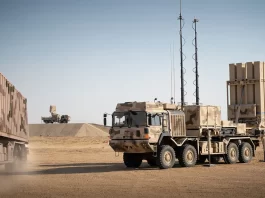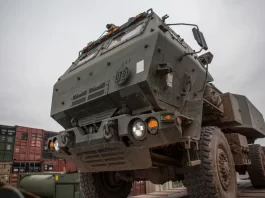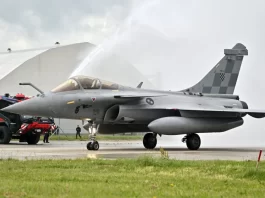In December 2023, the U.S. Air Force Special Operations Command (AFSOC) and General Atomics Aeronautical Systems, Inc. (GA-ASI) conducted a sequence of capability demonstrations in support of the development of the Adaptive Airborne Enterprise (A2E) concept.
An initial demonstration showcased single personnel operating three MQ-9A remotely piloted aircraft (RPA) concurrently via the AFSOC RPA Control Suite (ARCS), which the government owns. ARCS augments the Ground Control Station’s (GCS) capabilities by enabling standard crew to operate and control multiple unmanned aerial system (UAS) platforms. The second test demonstrated that an Altius 600 could be launched from a launch module by an MQ-9A.
AFSOC is purchasing MQ-9B from GA-ASI for rapid prototyping and forgoing a conventional GCS to manage the RPA. Instead, AFSOC plans to seize command of a family of small UAS, including the MQ-9A and MQ-9B, from the ARCS. This occurrence established the feasibility of employing ARCS for MQ-9A platform control, establishing a groundwork for subsequent endeavours to incorporate the MQ-9B aircraft into ARCS. This occurrence also showcased the feasibility of employing the MQ-9 platform as a substitute for tiny unmanned aerial systems, all of which will be under the control of ARCS.
This achievement marked the inaugural demonstration of managing multiple Robotic Process Units (RPAs) from a solitary workstation, a critical development in the pursuit of labour force reduction, stated AFSOC Colonel Trey Olman.
The A2E demonstrations were conducted at Melrose Air Force Range (MAFR), New Mexico, and Cannon Air Force Base, New Mexico, employing Satellite Communications (SATCOM) Launch & Recovery (SLR). Using GA-ASI’s Portable Aircraft Control Stations (PACS) and Ground Control Stations, AFSOC deployed all three MQ-9As. Once in flight, the three GCS transferred control of the three MQ-9A to a solitary ARCS workstation. ARCS returned control of all three aircraft to each GCS, and the three aircraft used the Automatic Takeoff and Landing Capability (ATLC) of GA-ASI to execute SATCOM landings.
AFSOC would project air power beyond the horizon using a family of large, unmanned aircraft and tiny, expendable UAS, from permissive to denied environments, according to the A2E concept. For deploying air-launched effects into potentially hostile environments, the MQ-9B is the optimal platform. Future AFSOC advanced UAS systems will rely heavily on the MQ-9B’s mix of range, endurance, reduced personnel requirements, and overall adaptability.






